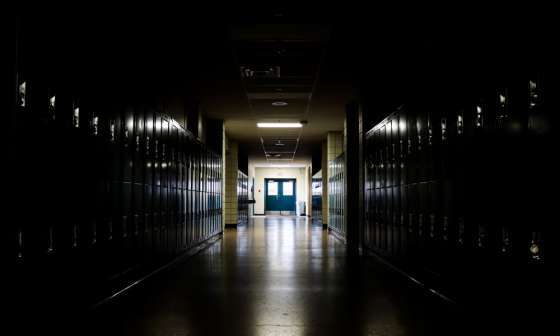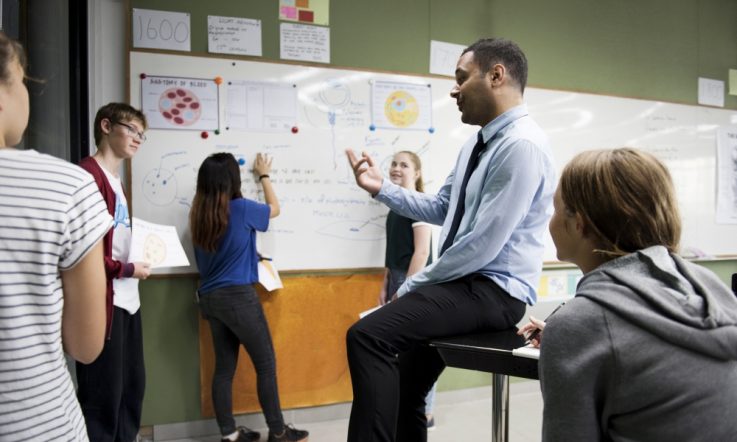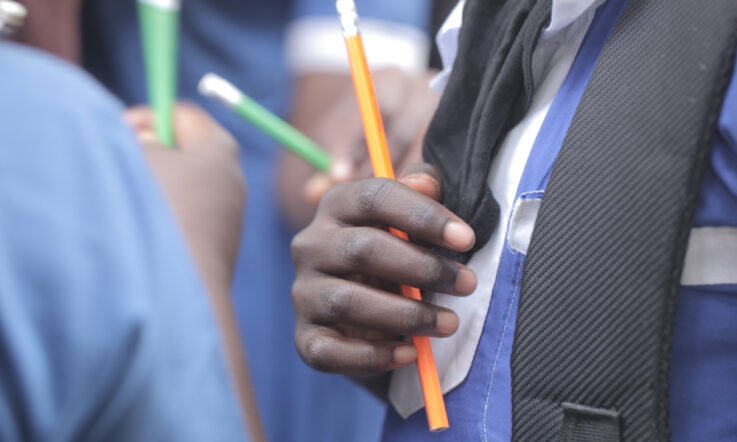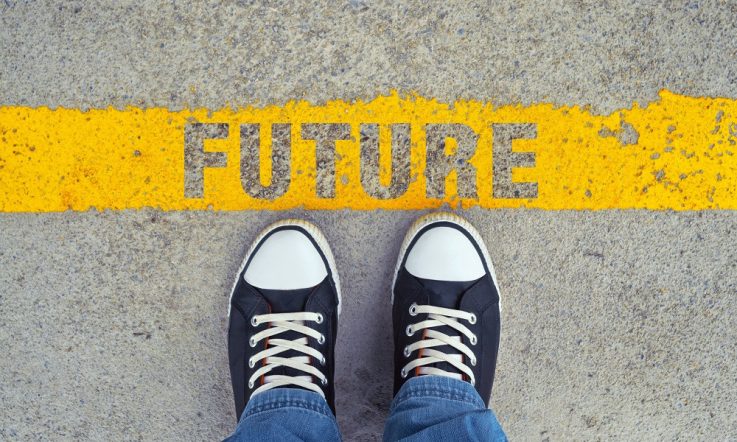The long shadows of the education crisis
In response to the COVID-19 pandemic, 1.6 billion students around the world were locked out of their schools. Some of them were able to find their way around closed school doors through alternative learning opportunities, supported by their parents and eager to learn.
But many students remained shut out when their school shut down, particularly those from the most marginalised groups, who didn't have access to digital learning resources or lacked the support, resilience and engagement to learn on their own.
If anything, this period has made public and widely visible the many benefits that students draw from being able to learn in close contact with their teachers and their peers, and with access to the variety of services which schools offer. This public awareness of the importance of schools and of teachers can help to further engagement and support from communities and parents for schools and for teachers.
Long-term effect of learning losses
It is natural that much of the public attention focuses on near-term challenges around health and employment, but the learning losses that follow from school closures will throw long shadows over the economic wellbeing of individuals and nations. People with lower skills will be less productive, less able to participate in economic and social activities, and more likely to receive social transfers. And different from the direct economic impact of the pandemic, which will be temporary, these effects are likely to remain permanent.
Put simply, our schools today are our economies tomorrow. While it's difficult to predict exactly how school closures will affect students' future development, economists in an OECD paper estimate that the students in Grades 1-12 affected by the closures could expect some 3 percent lower income over their entire lifetimes (Hanushek & Woessmann, 2020). This assumes that their learning losses so far are equivalent to missing one-third of a school year on average (a reasonable estimate from all we know) and that schools return to normal this fall. We can project that on to our economies and arrive at a staggering long-run cost ranging from $504 billion in South Africa to $14.2 trillion in the United States to $15.5 trillion in China (and if the disruptions continue into the new school year, as is already the case in some countries, those losses will grow proportionately).
Moving away from ‘business as usual'
Some argue that students will catch up as schools re-open, but that is unlikely to happen if business goes on as usual. Results from OECD's PISA assessments show that there was no real overall improvement in the learning outcomes of students across OECD countries over the last two decades, with no pandemic, and despite many educational reforms and expenditure per student rising by more than 15 per cent over the past decade alone.
It might be tempting to drop any further thought about improving education; impossible to change anything as big, complex and entrenched in vested interests as education. But many of the world's leading education systems have attained their positions in PISA only recently. Estonia rose steadily to the top among OECD countries, despite the fact that its expenditure per student remains about 30 per cent lower than the OECD average. Portugal advanced to the OECD average level despite being severely hit by the 2008 financial crisis. Some countries that still perform well below the OECD average saw remarkable improvements in their students' performance, including Albania, the Republic of Moldova, Peru and Qatar. So it can be done.
One of the reasons why we get stuck in education is that our thinking is framed by so many myths. ‘The poor will always do badly in school.' That's not true: the 10 per cent most disadvantaged kids in Shanghai did better on the 2012 PISA maths test than the 10 per cent most advantaged students in large American urban areas. ‘Immigrants will lower the performance of a country on international comparisons.' That's not true: PISA shows no relationship between the share of immigrants and the quality of an education system, and the school systems where immigrant students settle matters a lot more than the country where they came from. ‘Smaller classes mean always better results.' That's not true: In fact, whenever high-performing education systems have to make a choice between a smaller class and a better teacher, they go for the latter. ‘More time spent learning always means better results.' That's not true: Study hours in Finland are little more than half than what students in the UAE spend, but in Finland students learn a lot in little time while in the UAE they learn very little in a lot of time.
Valuing education highly is part of the equation. Another part is the deep belief that every student can learn and to put the quality of learning first. In high-performing education systems parents and teachers trust that all students can and need to meet high standards, and that trust is manifested in student and teacher behaviour. And nowhere does the quality of a school system exceed the quality of its teachers.
Building on current efforts
Given the uncertainties that accompany all change, the status quo will always have many protectors. It is important to build on the already ongoing efforts to establish an infrastructure for online and remote learning, and to continue to develop the capacity of students and teachers to learn and to teach in that way.
Effective learning out of school during the pandemic placed much greater demands on autonomy, capacity for independent learning, executive functioning, self-monitoring, and capacity to learn online. The plans to return to school should therefore focus on more intentional efforts to cultivate those essential skills among all students. This is essential first because there is a possibility that, until a vaccine is widely available, any return to school may have to be again interrupted as a result of future outbreaks, at least locally. But beyond the pandemic, there are benefits to students in expanding their learning time and learning opportunities beyond the walls of the school by being able to learn using a variety of modalities of distance learning. The plans for school reopening could consider blended modalities to access the curriculum for all students.
Creating a more level playing field
In one way, the crisis has revealed the enormous potential for innovation that is dormant in many education systems, which often remain dominated by hierarchical structures geared towards rewarding compliance. It will be important to create a more level playing field for innovation in schools. Governments can help strengthen professional autonomy and a collaborative culture where great ideas are refined and shared. Governments can also help with funding, and can offer incentives that raise the profile of, and demand for, what works. But governments alone can only do so much.
Silicon Valley works because governments created the conditions for innovation, not because governments do the innovating. Similarly, governments cannot innovate in the classroom; they can only help by opening up systems so that there is an evidence-based innovation-friendly climate where transformative ideas can bloom. That means encouraging innovation within the system and making it open to creative ideas from outside.
To mobilise support for innovation, resilience and change, particularly in the uncertainty created by the pandemic, education systems need to become better at communicating the need and building support for change. Investing in capacity development and change-management skills will be critical; and it is vital that teachers become active agents for change, not just in implementing technological and social innovations, but in designing them too. That also means that education systems need to become better at identifying key agents of change and champion them; and to find more effective ways of scaling and disseminating innovations.
It will be crucial that the many good experiences learned during the pandemic will not be lost when things return to ‘normal' but provide inspiration for the further development of education. That is also about finding better ways to recognise, reward and celebrate success, to do whatever is possible to make it easier for innovators to take risks and encourage the emergence of new ideas.
Making the possible attainable
In sum, while this crisis has exposed the many inadequacies and inequities in our education systems, this moment also holds the possibility that we won't return to the status quo when things return to ‘normal'. While the pandemic has disrupted education, these disruptions don't have predetermined implications. It is the nature of our collective and systemic responses to the disruptions that will determine how we are affected by them. Securing significant improvements in learning outcomes will be central to this.
As improvements in some countries have shown, the task is not to make the impossible possible, but to make the possible attainable. It is entirely within our means to deliver a future for millions of learners who currently don't have one.
References
Hanushek, E., & Woessmann, L. (2020). The economic impacts of learning losses. OECD Education Working Papers, No. 225. OECD Publishing. https://doi.org/10.1787/21908d74-en



